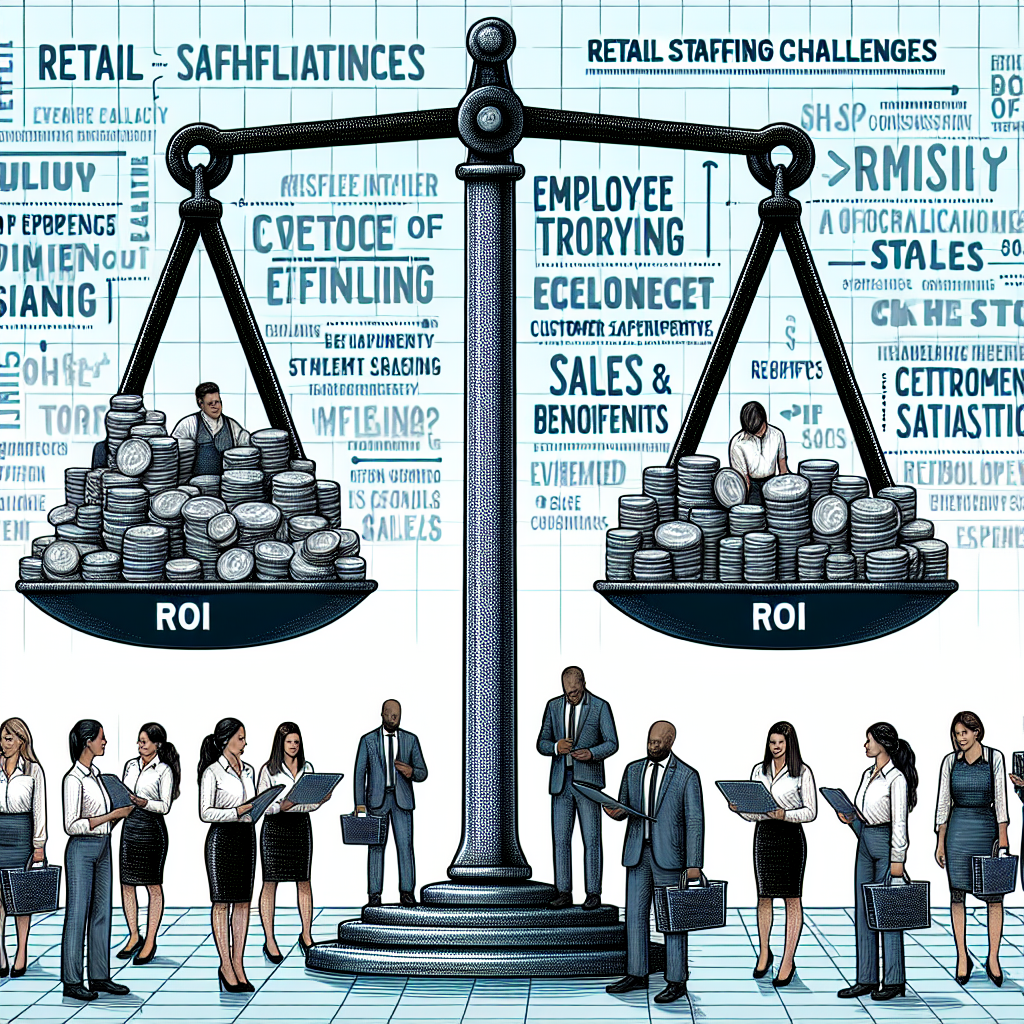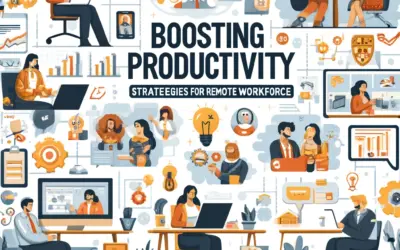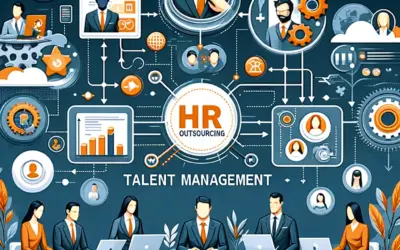Understanding the Relationship Between Retail Staffing and ROI
Improving retail performance is a top priority for businesses aiming to thrive in a competitive market. Central to this pursuit is acknowledging the powerful connection between retail staffing and the return on investment (ROI). Comprehensive staffing strategies do not merely fill scheduling gaps but maximize profitability. Efficient staffing affects customer satisfaction, operational effectiveness, and sales conversion rates, thereby influencing a store’s bottom line.
Optimizing Staff for Peak Performance
One of the primary components of leveraging retail staffing for enhanced ROI is optimizing staff numbers for peak performance. This entails meticulous forecasting and scheduling to ensure that high footfall periods are adequately staffed to manage customer needs without inflating labor costs during slower periods. Harnessing data analytics tools can aid retailers in anticipating customer flow patterns and aligning workforce scheduling to meet rather than exceed demand. This strategic approach minimizes the risk of overstaffing and underutilization of resources, thus optimizing labor costs and maximizing sales opportunities.
Training and Employee Satisfaction
Investing in thorough employee training programs is crucial for empowering staff with the skills and knowledge necessary to drive sales and enhance customer experiences. Skilled associates are more efficient, can address customer queries effectively, and are adept at upselling and cross-selling, all of which are key ingredients for improving ROI. Moreover, employee satisfaction intrinsically links to performance. Staff who feel valued and equipped to perform their roles are likely to contribute to a positive shopping environment, fostering customer loyalty and repetitive business, which again favorably impacts ROI.
Staffing Versatility and Technological Integration
The role of retail staff has evolved beyond traditional sales responsibilities. Today’s retail environments also require staff versatility and technological adeptness. Employees must be able and willing to adapt to varying roles, such as managing online order pick-ups, handling in-store digital kiosks, and providing personalized shopping assistance both offline and online. Integrating staff capabilities with the latest retail technology creates a seamless shopping experience for customers, catalyzing higher sales volumes and thereby strengthening the ROI. Training staff to proficiently navigate between these different roles ensures retailers can capitalize on multiple sales channels, thus driving a stronger return on every staffing dollar invested.
By grasping the interrelation between retail staffing and ROI, retailers can craft strategies that yield significant financial growth. Smart staffing solutions empower employees, optimize operations, and create superior customer experiences, all of which are key factors for business success in the bustling retail landscape.
Identifying Key Retail Staffing Challenges that Affect Profitability
High Turnover Rates in Retail Positions
Retail businesses often face the ongoing dilemma of high turnover rates among staff. This can lead to a cycle of continuous recruitment, training, and management, which significantly drains resources. Effective employee retention strategies are crucial to minimize these disruptions and maintain a stable, experienced workforce that can drive sales and uphold customer service standards. Frequent staff changes can also hurt morale and lead to knowledge gaps, both of which can have a detrimental impact on profitability.
Reasons Behind Turnover
- Limited career advancement opportunities
- Competitive job market offering higher wages
- Seasonal employment peaks and troughs
- Varying demand leading to inconsistent hours
Strategies to Reduce Turnover
- Implementing comprehensive onboarding and training programs
- Providing competitive compensation and benefits packages
- Fostering a positive workplace culture
- Offering flexible scheduling options
Inadequate Staffing During Peak Business Periods
Insufficient staffing during peak shopping seasons can severely hamstring a retailer’s ability to capitalize on increased foot traffic. Long queues and poor customer service because of overwhelming demand can tarnish a business’s reputation and drive consumers to competitors. Strategic workforce planning and flexible staffing solutions are paramount to ensure that customer experience remains a priority, which in turn fosters brand loyalty and boosts sales.
Flexible Staffing Solutions
- Seasonal hiring to accommodate increased demand
- Investing in cross-training employees to maximize efficiency
- Utilizing part-time staff or temporary contracts
Lack of Skilled and Knowledgeable Staff
Another pressing issue in retail staffing is the shortage of skilled employees who can deliver a high level of customer service and operate complex point-of-sale systems. Investing in employee training and development is therefore not just a necessity but a strategic move. Proper training not only equips staff with the skills needed to perform their roles effectively but also instills product knowledge that can drastically improve the customer experience and increase average transaction values.
Investing in Staff Development
- Regular product knowledge workshops
- Training programs specific to customer service excellence
- Technology training for new systems and sales tools
- Leadership development programs for potential managers
Strategies for Measuring the ROI of Retail Staffing Investments
Understanding Key Performance Indicators (KPIs) in Retail Staffing
Measuring the return on investment (ROI) for retail staffing begins with understanding Key Performance Indicators (KPIs). Retail managers should pinpoint specific KPIs related to staffing such as sales per employee, customer satisfaction scores, and employee turnover rates. Establishing a clear link between staff performance and these indicators allows for a measurable and transparent assessment of how staffing investments impact the bottom line.
It is important to track these KPIs consistently over time. By using tools such as business intelligence software or even simple spreadsheet templates, retailers can capture trends and identify areas for improvement. Sales per employee, for example, can point to the effectiveness of sales training or the need for scheduling adjustments during peak hours to maximize staff productivity.
Tracking Sales per Employee
Sales per employee is a straightforward and effective marker of staffing ROI. To calculate this, divide the total sales in a given period by the number of employees. Observing changes in this metric can guide decisions on hiring or training initiatives to improve sales efficiency.
Monitoring Customer Satisfaction Scores
Another aspect of gauging ROI is analyzing customer satisfaction scores. These can reflect staff performance in terms of service quality, product knowledge, and customer engagement. Surveys and feedback forms can be a valuable source of such data. Higher customer satisfaction is often correlated with increased loyalty and sales, which contributes positively to the ROI.
Utilizing Staff Training as a ROI Booster
Investing in staff training is pivotal in enhancing ROI. Effective training programs empower employees, resulting in improved sales techniques and customer service. Additionally, equipping staff with comprehensive product knowledge and proficiency in using point-of-sale systems can lead to increased efficiency and quicker transaction times, which both impact sales positively.
Benefits of Regular Training Programs
Regular training sessions keep retail staff updated on product launches, promotional strategies, and store policies. These efforts enrich the shopping experience for customers and can stimulate sales growth—a direct reflection of staff investment paying off.
Analytics and Technology: Modern Tools for Measurable Results
Today’s retail landscape offers sophisticated tools and platforms to measure the impact of staffing investments accurately. Implementing retail analytics can aid in comprehending how staff interactions lead to sales. For example, analyzing in-store traffic patterns alongside staffing levels can reveal optimal times for staff deployment to enhance customer service and conversion rates.
Advancements in technology also extend to digital training modules that track staff progress and engagement, which provides insights into the effectiveness of training investments. This tech-driven approach allows for adjusting training programs in real-time to optimize their impact on staff performance and, subsequently, ROI.
Refining ROI Through Employee Engagement and Retention
High employee turnover can be costly for retailers, impacting continuity and increasing recruitment and training expenses. By focusing on employee engagement and retention strategies, retailers can better measure and realize ROI from staffing investments. Creating a positive work environment, offering competitive wages and benefits, and recognizing employee achievements can lead to a more dedicated and productive workforce, which is crucial for achieving a strong ROI.
An engaged team is likely to provide better customer service and exhibit higher sales performance, thereby enhancing the ROI. Moreover, long-term employees develop expertise and provide a sense of stability for customers, strengthening relationships and fostering brand loyalty.
Assessing the Impact of Retention Strategies
Dedicating resources to strategies that promote job satisfaction and staff retention has a direct impact on ROI. Tools such as employee surveys and feedback sessions can help in measuring the success of these strategies and pinpoint areas for further improvement.
Investing in retail staffing is not just a matter of numbers; it’s about understanding how each aspect of staffing contributes to overall business success. By diving into KPIs, embracing training, leveraging technology, and fostering employee engagement, retailers can measure and enhance the ROI from their staffing investments with precision. Each strategy represents a step towards a more profitable and sustainable retail operation.
Exploring the Impact of Effective Retail Staffing Models on ROI
Case Studies: Effective Retail Staffing Models and Their ROI Outcomes
Effective retail staffing is crucial for maximizing customer satisfaction and sales performance. Several case studies have demonstrated that by implementing strategic staffing models, retail stores can achieve notable improvements in their Return on Investment (ROI). This exploration takes a closer look at the various staffing strategies that have led to profitable ROIs and sustainable growth in the retail sector.
Flexible Staffing Solutions Optimizing Peak Seasons
One of the key strategies in retail staffing involves adopting a flexible model that accounts for peak shopping periods. By increasing staff numbers to meet the heightened demand during holiday seasons or promotional events, retailers can optimize sales opportunities and improve customer experience. A case study involving a nationwide clothing retailer showed a 20% increase in sales and a significant improvement in their ROI after employing this model during the holiday season.
Technology-Enhanced Staffing for Efficiency
Another focus area has been the incorporation of technology to aid in workforce management. A prominent electronics retailer implemented a staffing model that hinged on real-time data analytics to predict customer flow. This approach helped in scheduling staff more efficiently, leading to a 15% reduction in labor costs and an enhanced ROI. The synergy between human resourcefulness and digital tools proved to be a formidable strategy.
Upskilling Employees for Improved Sales and Customer Support
- Investment in training programs
- Staff capable of delivering expert advice
- Focus on high-value products and services
Investing in staff development is another pathway to better financial outcomes. Upskilling employees allows them to provide expert advice and focus on selling high-value products and services. According to a study examining a luxury goods outlet, after comprehensive product knowledge training, there was a 12% uplift in high-ticket item sales, underscoring the importance of a knowledgeable workforce to ROI.
Incentivizing Staff for Performance Achievements
Last but not least, creating an incentive-based work environment has demonstrated a positive impact on ROI. Case studies have shown that when employees are rewarded for achieving sales targets or delivering exceptional customer service, there is an increase in motivation, resulting in better performance. A multi-brand retail chain adopted this model, which led to a 10% increase in overall sales and a stronger ROI, affirming that happy employees can translate to happy customers and better financials.
Optimizing Retail Staffing for Enhanced ROI: Tools and Techniques
Understanding the Impact of Staffing on Retail ROI
Optimizing retail staffing is crucial for enhancing the return on investment (ROI) in a retail environment. Balancing the number of staff on the floor with customer demands ensures a smooth customer experience while minimizing excess labor costs. Retailers must comprehend that effective staffing directly influences customer satisfaction, sales conversion rates, and overall store efficiency. Proper staff allocation at different times of the day can lead to significant improvements in productivity and profitability, thus, boosting the retail ROI.
Analyzing Customer Traffic Patterns
One of the key techniques in retail staffing optimization is the analysis of customer traffic patterns. By leveraging data analytics tools, retailers can predict busy periods and schedule staff accordingly. Effective use of historical sales data and foot traffic analytics allows managers to tailor staffing levels to anticipated customer volumes, ensuring that the store can handle peak times without overstaffing during slower periods.
Investing in Staff Training and Development
In addition to scheduling, investing in employee training is vital for maximizing staff effectiveness. Properly trained employees are more efficient, can provide better customer service, and are adept at upselling or cross-selling, contributing to higher sales figures and a stronger ROI. Continuous employee development programs keep the staff updated on product knowledge and sales techniques, thus fostering a more competent workforce.
Technological Advancements in Retail Staffing
Technology plays a pivotal role in fine-tuning retail staffing. Innovative staffing solutions, such as workforce management software, are transforming how retailers forecast labor needs and schedule employees. These tools consider various factors including sales trends, local events, and even weather forecasts to create optimal staffing schedules. This technological approach removes much of the guesswork and allows for a more scientific method of staffing, which aligns with the fluctuating nature of retail sales.
Embracing Mobile Staffing Applications
Mobile staffing applications enable managers and staff to communicate in real-time about scheduling. They allow employees to swap shifts conveniently, decreasing the likelihood of understaffing and the need for last-minute coverages. These applications also often include features for tracking work hours and managing leaves, which simplifies complicated aspects of workforce management.
Utilizing AI and Predictive Analytics
Artificial intelligence (AI) and predictive analytics are becoming increasingly important in predicting optimal staffing levels. Retailers can use these cutting-edge technologies to forecast future sales and determine the precise number of employees needed to maximize sales opportunities while controlling labor costs. As AI systems learn from the data, their predictions and scheduling recommendations become even more accurate over time.
Strategic Staff Deployment for Peak Performance
The implementation of strategic staff deployment can significantly improve ROI. This involves placing the right employees in the right positions at the right times. By aligning staff strengths with specific roles and customer needs, retailers can enhance service quality and operational efficiency. Cross-training employees to perform multiple roles further increases flexibility and responsiveness, which is essential for adapting to the dynamic retail environment.
Creating Employee Engagement and Ownership
Fostering a sense of engagement and ownership among retail staff motivates them to perform better. When employees are involved in goal setting and feel their contribution is valued, they are more likely to take initiative, provide excellent customer service, and drive sales—key factors that directly impact ROI.
Optimizing Shift Patterns and Break Schedules
A detailed analysis of shift patterns and break schedules can lead to enhanced staff productivity. By aligning break times with slower customer traffic periods, retailers ensure that the sales floor is adequately covered during peak shopping times. Recognizing the importance of adequately timed breaks also reduces employee fatigue and increases job satisfaction, contributing to a more attentive and active workforce.
By leveraging these tools and techniques, retailers can optimize their staffing practices, leading to enhanced customer experiences, improved sales performance, and ultimately a higher return on investment.













0 comentarios